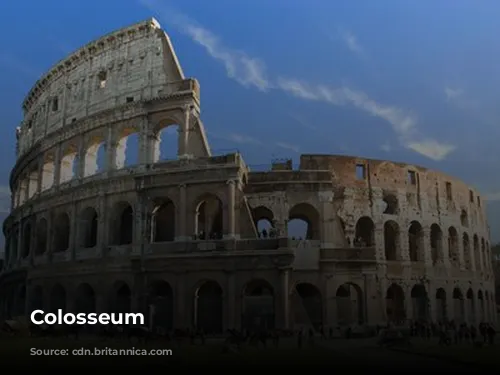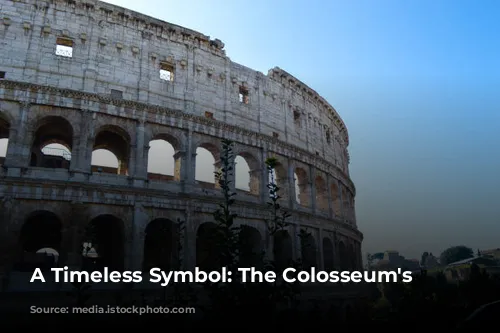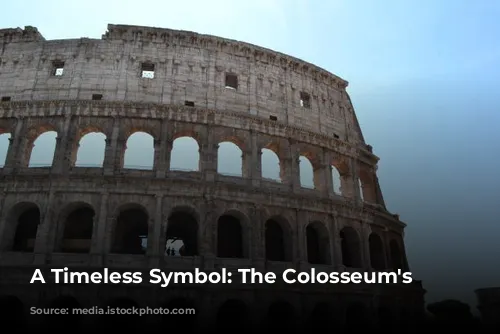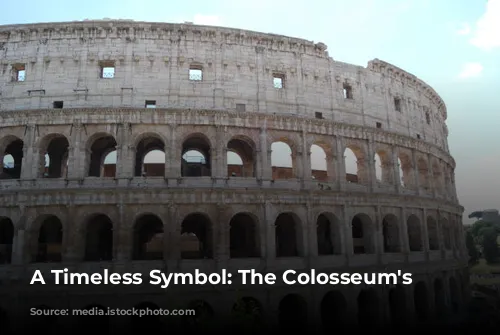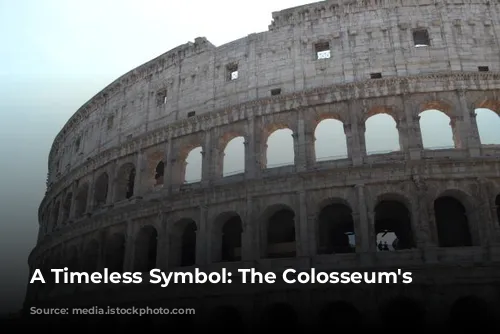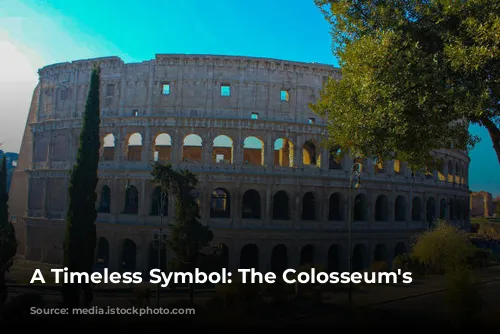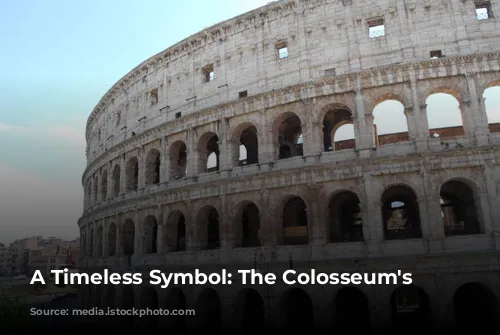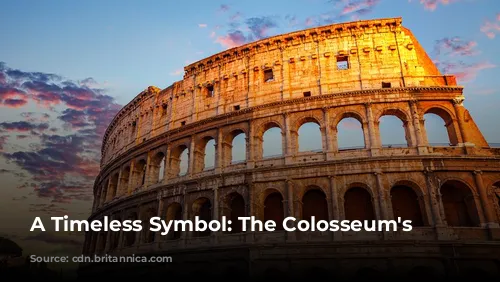The Colosseum, a majestic monument to ancient Rome’s engineering brilliance, stands as a testament to the empire’s power and artistry. Even today, centuries after the Roman Empire’s decline, the Colosseum draws crowds, captivating visitors with its grandeur and historical significance. This iconic structure, one of the few well-preserved remnants of Roman architecture, is a major source of revenue for Italy’s tourism industry. In 2018, the Colosseum, along with the Roman Forum and Palatine Hill, attracted millions of tourists, generating over $63.3 million (€53.8 million) in revenue, making it Italy’s top tourist attraction.
From Arena to Fortress: The Colosseum’s Transformation
The Colosseum’s journey through time has been marked by both grandeur and neglect. After the fall of the Western Roman Empire, this once-thriving arena fell into disrepair. During the 12th century, the Frangipane and Annibaldi families, prominent Roman families of the time, transformed the Colosseum into their fortress. This grand structure, built to entertain thousands, became a symbol of power and control for these influential families.
The Colosseum’s fate took another unexpected turn in the late 15th century when Pope Alexander VI allowed its use as a quarry. This era of neglect, lasting over a thousand years, saw the Colosseum stripped of its precious materials. It was only in the 1990s that the Italian government, recognizing the importance of this historical treasure, launched state-funded restoration efforts to preserve the Colosseum for future generations.
A Monument to Imperial Ambition: The Colosseum’s Birth
The Colosseum’s construction stemmed from the ambition of Emperor Vespasian, who sought to revitalize Rome after a tumultuous period. He envisioned the Colosseum as a grand spectacle, a place to showcase the empire’s power and entertain its citizens. Like other amphitheaters built during this era, the Colosseum was designed as a stage for gladiator fights, animal hunts, and even elaborate mock naval battles.
The Colosseum’s construction commenced under Vespasian between 70 and 72 CE, funded by the spoils of war from Titus’s conquest of Jerusalem. Jewish slaves, captured during the siege, were forced to contribute their labor to this grand project. The Colosseum, a monument to Roman conquest and power, stood as a reminder of the empire’s might. The structure, completed and dedicated in 80 CE by Emperor Titus, Vespasian’s son and successor, saw further additions by Emperor Domitian in 82 CE, who added the fourth story.
Engineering Marvel: The Colosseum’s Design and Construction
The Colosseum, an elliptical structure, is a testament to Roman architectural ingenuity. Built with stone, concrete, and tuff, it stands four stories tall, measuring 620 by 513 feet (189 by 156 meters), a monument to human ingenuity and craftsmanship.
The Colosseum’s construction, unlike earlier amphitheaters, depended on a freestanding structure of stone and concrete. It was a departure from the traditional method of building amphitheaters into the sides of hills. The Colosseum utilized a complex system of barrel vaults and groin vaults to achieve its impressive size and structural integrity. The arena’s facade is adorned with three stories of arcades, framed by engaged columns in the Doric, Ionic, and Corinthian orders, an architectural masterpiece that influenced the Renaissance.
The Colosseum’s interior could accommodate approximately 50,000 spectators, shielded from the sun by a massive retractable awning. This remarkable feat of engineering involved supporting masts, extending from corbels on the attic story, which required hundreds of Roman sailors to operate.
The Colosseum witnessed countless gladiatorial combats, animal hunts, and even mock naval engagements, showcasing the Roman Empire’s thirst for entertainment. However, the Colosseum’s role in the martyrdom of early Christians remains uncertain.
From Neglect to Revival: The Colosseum’s Modern Legacy
The Colosseum, once a symbol of power and grandeur, endured periods of neglect and decay. After the fall of the Roman Empire, the Colosseum was repurposed as a church and then a fortress. The structure suffered from the ravages of time, lightning strikes, earthquakes, vandalism, and pollution. Over a thousand years of neglect led to the disappearance of its marble seats and decorative materials, as the Colosseum was stripped for building materials.
However, the Colosseum’s fate took a turn for the better in the 19th century when preservation efforts began in earnest. Notable efforts by Pope Pius VIII marked the beginning of the Colosseum’s revival. The 1990s saw the launch of a major restoration project, bringing the Colosseum back to its former glory. Today, the Colosseum stands as a major tourist attraction, drawing millions of visitors annually.
The Colosseum, an enduring symbol of ancient Rome’s power and artistry, continues to inspire awe and wonder in visitors from all over the world. This ancient arena, a testament to the empire’s architectural brilliance, offers a glimpse into the past and provides a window into the world of ancient Rome. The Colosseum’s enduring legacy serves as a reminder of the enduring power of human ingenuity and the enduring allure of history.


